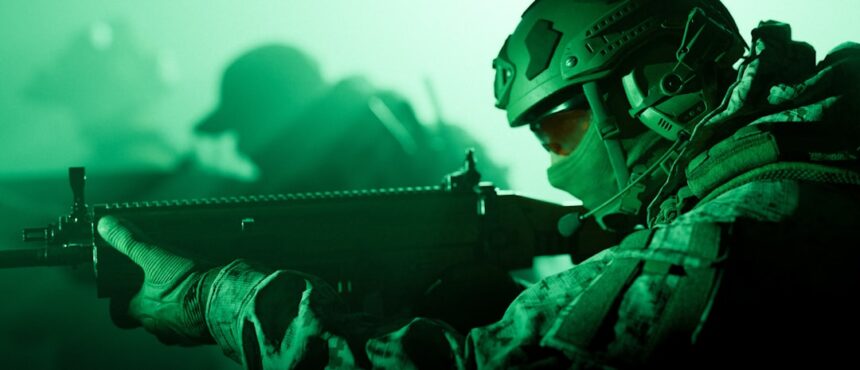The landscape of warfare has undergone a profound transformation over the past few decades, driven by rapid advancements in technology. This revolution in military affairs has not only changed the way conflicts are fought but has also redefined the very nature of warfare itself. As nations strive to maintain their strategic advantages, they increasingly turn to innovative technologies that promise to enhance their military capabilities.
The introduction of drones, cyber warfare, and artificial intelligence has shifted the paradigm, making traditional combat methods seem outdated. This evolution raises critical questions about the future of warfare and the implications of these changes on global security. As the world becomes more interconnected, the nature of threats has also evolved.
Modern warfare is no longer confined to conventional battlefields; it now encompasses a wide array of domains, including cyberspace and outer space. The integration of advanced technologies into military strategies has created new opportunities for both offense and defense. However, this revolution also brings with it a host of challenges, including ethical dilemmas and the potential for escalation in conflicts.
Understanding the implications of these technological innovations is essential for policymakers, military leaders, and society as a whole.
Key Takeaways
- Warfare is being revolutionized by technological innovations, artificial intelligence, advancements in weaponry and defense systems, and the importance of cybersecurity and space and aerospace technology.
- The impact of technological innovations on warfare has led to increased efficiency, precision, and lethality in military operations.
- Artificial intelligence plays a crucial role in modern warfare, from autonomous weapons systems to decision-making support for military commanders.
- Advancements in weaponry and defense systems have led to the development of more powerful and sophisticated military capabilities.
- The cost of revolutionizing warfare is significant, and balancing the budget and prioritizing military spending is essential for sustainable innovation in warfare.
The Impact of Technological Innovations on Warfare
Technological innovations have fundamentally altered the dynamics of warfare, enabling militaries to operate with unprecedented efficiency and precision. The introduction of advanced communication systems, surveillance technologies, and unmanned vehicles has transformed how information is gathered and utilized in combat scenarios. For instance, real-time data analytics allows commanders to make informed decisions on the battlefield, significantly reducing response times and increasing operational effectiveness.
This shift towards data-driven warfare has made it possible for forces to anticipate enemy movements and adapt strategies accordingly. Moreover, the proliferation of technology has democratized access to military capabilities. Smaller nations and non-state actors can now leverage advanced tools that were once exclusive to superpowers.
This accessibility has led to a more complex global security environment, where asymmetric warfare tactics are increasingly common.
The impact of these innovations extends beyond the battlefield; they influence diplomatic relations, economic stability, and international norms surrounding conflict.
The Role of Artificial Intelligence in Modern Warfare

Artificial intelligence (AI) stands at the forefront of the technological revolution in warfare, offering capabilities that were once relegated to science fiction. AI systems can analyze vast amounts of data at speeds far beyond human capability, enabling militaries to identify patterns and predict outcomes with remarkable accuracy. From autonomous drones that can conduct surveillance missions to AI-driven decision support systems that assist commanders in strategizing, the integration of AI into military operations is reshaping how wars are fought.
However, the use of AI in warfare also raises significant concerns regarding accountability and ethical considerations. The potential for autonomous weapons systems to make life-and-death decisions without human intervention poses profound moral questions. As militaries increasingly rely on AI for critical functions, the risk of unintended consequences grows.
The challenge lies in ensuring that AI systems are designed with robust ethical frameworks that prioritize human oversight and accountability. Balancing the benefits of AI with its inherent risks will be crucial as nations navigate this new frontier in warfare.
Advancements in Weaponry and Defense Systems
| Technology | Advancement | Impact |
|---|---|---|
| Missile Defense Systems | Improved accuracy and interception capabilities | Enhanced protection against missile threats |
| Stealth Technology | Reduced radar detection | Increased survivability of aircraft and vehicles |
| Cybersecurity | Advanced encryption and threat detection | Protection against cyber attacks and data breaches |
| Directed Energy Weapons | Increased precision and range | Efficient and cost-effective defense capabilities |
The evolution of weaponry has been one of the most visible aspects of the revolution in warfare. Advanced missile systems, precision-guided munitions, and hypersonic weapons have redefined the capabilities of modern militaries. These innovations allow for strikes with pinpoint accuracy, minimizing collateral damage while maximizing effectiveness against strategic targets.
The development of smart weapons that can adapt to changing conditions on the battlefield exemplifies how technology is enhancing lethality and operational success. In parallel with offensive capabilities, advancements in defense systems have also progressed significantly. Modern militaries are investing heavily in missile defense technologies designed to intercept incoming threats before they reach their targets.
Systems such as the Aegis Ballistic Missile Defense and Israel’s Iron Dome showcase how technology can be harnessed to protect civilian populations and critical infrastructure from aerial attacks. As nations continue to innovate in both offensive and defensive domains, the arms race intensifies, leading to a cycle of escalation that can destabilize global security.
The Cost of Revolutionizing Warfare
While technological advancements offer numerous benefits to military operations, they come at a substantial cost. Research and development expenditures for cutting-edge technologies can strain national budgets, diverting resources from other essential areas such as education and healthcare. As nations compete for technological supremacy, the financial burden of maintaining advanced military capabilities can lead to unsustainable spending patterns.
This reality raises important questions about prioritization and resource allocation within government budgets. Furthermore, the costs associated with advanced warfare extend beyond financial implications. The rapid pace of technological change necessitates continuous training and adaptation for military personnel, which can be both time-consuming and expensive.
As militaries integrate new technologies into their operations, they must also grapple with the challenges of maintaining readiness and ensuring that personnel are equipped with the skills needed to operate sophisticated systems effectively. Balancing these costs while ensuring national security remains a complex challenge for policymakers.
Balancing the Budget: Prioritizing Military Spending

In an era marked by rapid technological advancements, governments face the daunting task of balancing military spending with other pressing societal needs. The allocation of resources towards defense initiatives often sparks debates about national priorities and the role of government in ensuring public welfare. As nations invest heavily in advanced weaponry and defense systems, questions arise about whether these expenditures are justified in light of competing demands for funding in areas such as education, healthcare, and infrastructure.
To navigate this complex landscape, policymakers must engage in strategic planning that considers both immediate security needs and long-term societal goals. This requires a comprehensive assessment of threats and vulnerabilities while also recognizing the importance of investing in human capital and social programs. By fostering collaboration between military leaders and civilian policymakers, nations can develop balanced budgets that address security concerns without neglecting essential services that contribute to overall societal well-being.
The Ethical and Moral Implications of Advanced Warfare
The revolution in warfare brings with it profound ethical and moral implications that cannot be overlooked. As militaries increasingly rely on advanced technologies such as AI and autonomous weapons systems, questions arise about accountability for actions taken during conflict. The potential for machines to make life-and-death decisions raises concerns about the erosion of human agency in warfare.
Who is responsible when an autonomous system causes unintended harm? These dilemmas challenge traditional notions of just war theory and raise urgent calls for ethical frameworks governing the use of advanced technologies. Moreover, the psychological impact on soldiers who operate alongside AI systems must be considered.
The dehumanization inherent in relying on machines for combat can lead to moral injury among service members who grapple with their roles in an increasingly automated battlefield. Addressing these ethical concerns requires a multidisciplinary approach that involves ethicists, technologists, military leaders, and policymakers working together to establish guidelines that prioritize human dignity and accountability in warfare.
The Future of Warfare: Predictions and Speculations
As technological advancements continue to reshape warfare, predictions about its future become increasingly complex. Experts speculate that future conflicts may be characterized by hybrid warfare strategies that blend conventional military tactics with cyber operations and information warfare. The ability to manipulate information on social media platforms could become a powerful tool for influencing public perception and shaping narratives during conflicts.
This evolution underscores the need for militaries to adapt their strategies to address not only physical threats but also psychological ones. Additionally, the role of emerging technologies such as quantum computing and biotechnology may further revolutionize warfare in ways that are difficult to predict. Quantum computing could enable unprecedented data processing capabilities, while advancements in biotechnology may lead to new forms of biological warfare or enhanced soldier performance.
As nations grapple with these possibilities, they must remain vigilant about the ethical implications and potential consequences of such innovations on global security dynamics.
The Importance of Cybersecurity in Modern Warfare
In an age where information is power, cybersecurity has emerged as a critical component of modern warfare strategies. Cyberattacks can disrupt essential services, compromise sensitive data, and undermine national security without a single shot being fired. As nations increasingly rely on interconnected systems for military operations, protecting these networks from cyber threats becomes paramount.
The potential for adversaries to exploit vulnerabilities in critical infrastructure highlights the need for robust cybersecurity measures. Moreover, cybersecurity extends beyond military applications; it encompasses civilian infrastructure as well. Ensuring the resilience of power grids, financial systems, and communication networks is essential for maintaining societal stability during times of conflict or crisis.
As cyber threats evolve in sophistication and scale, governments must prioritize investments in cybersecurity initiatives while fostering collaboration between public and private sectors to safeguard against potential attacks.
The Role of Space and Aerospace Technology in Revolutionizing Warfare
The final frontier is no longer just a realm for exploration; it has become a battleground for modern warfare as nations recognize the strategic importance of space capabilities. Satellites play a crucial role in communication, reconnaissance, and navigation for military operations. The ability to gather intelligence from space provides an unparalleled advantage on the battlefield, allowing forces to monitor enemy movements and coordinate operations effectively.
As tensions rise among space-faring nations, competition for dominance in space technology intensifies. The establishment of military branches dedicated to space operations reflects this growing recognition of space as a critical domain for national security. However, this militarization of space raises concerns about potential conflicts beyond Earth’s atmosphere and the need for international agreements governing space activities.
Ensuring responsible use of space technology will be essential for maintaining peace and stability in this new frontier.
The Need for Responsible and Sustainable Innovation in Warfare
The revolutionizing of warfare through technological advancements presents both opportunities and challenges that demand careful consideration from global leaders. As nations navigate this complex landscape, it is imperative that they prioritize responsible innovation that aligns with ethical standards and promotes global stability. Balancing military capabilities with societal needs requires a commitment to transparency, accountability, and collaboration among stakeholders.
Ultimately, the future of warfare will depend not only on technological prowess but also on humanity’s ability to navigate its moral implications responsibly. By fostering dialogue among military leaders, ethicists, technologists, and policymakers, nations can work towards a future where innovation enhances security without compromising fundamental values or escalating conflicts further. In this rapidly changing world, responsible stewardship over advanced technologies will be crucial for ensuring a safer future for all.
In the ever-evolving landscape of military technology, the balance between innovation and cost remains a critical consideration for defense strategists. As nations strive to maintain a competitive edge, the development of cutting-edge weaponry and defense systems often comes with a hefty price tag. This dynamic is explored in depth in a related article on warfare innovation and cost, which can be found on the In The War Room website. For further insights into how these factors influence modern military strategies, you can read more by visiting this article.
FAQs
What is warfare innovation?
Warfare innovation refers to the development and implementation of new technologies, tactics, and strategies in the field of military operations. It involves finding new ways to gain an advantage over an adversary in combat.
Why is warfare innovation important?
Warfare innovation is important because it allows military forces to adapt to changing threats and environments, maintain a competitive edge, and achieve military objectives more effectively and efficiently.
How does warfare innovation impact cost?
Warfare innovation can impact cost in various ways. While the development and implementation of new technologies and strategies may initially require significant investment, they can also lead to cost savings in the long run by improving efficiency, reducing casualties, and achieving military objectives more effectively.
What are some examples of warfare innovation?
Examples of warfare innovation include the development of unmanned aerial vehicles (drones), cyber warfare capabilities, precision-guided munitions, and advanced communication and surveillance technologies. Additionally, new tactics and strategies such as asymmetric warfare and network-centric warfare represent innovative approaches to military operations.
How do military organizations approach warfare innovation?
Military organizations approach warfare innovation through research and development efforts, collaboration with industry partners and academic institutions, and the integration of new technologies and tactics into training and operations. Additionally, many countries have dedicated defense innovation agencies or programs to foster and support innovation in the military sector.




